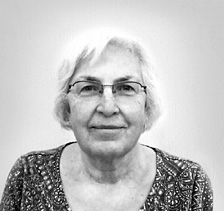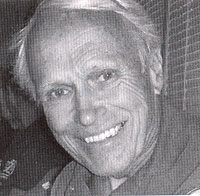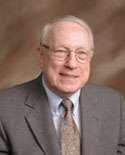Montessori and the Theosophical Society
By Winifred Wylie
Originally printed in the MARCH-APRIL 2008 issue of Quest magazine.
Citation: Wylie, Winifred . "Montessori and the Theosophical Society." Quest 96.2 (MARCH-APRIL 2008): 53-55.
 MARIA MONTESSORI had her first acquaintance with Theosophy, early in the twentieth century, when she went to hear Annie Besant speak in London in 1907 after Montessori had established her first Casa dei Bambini (i.e., Children's House). Annie Besant spoke in praise of Montessori's work in education which pleased Montessori, and thus sealed their friendship.
MARIA MONTESSORI had her first acquaintance with Theosophy, early in the twentieth century, when she went to hear Annie Besant speak in London in 1907 after Montessori had established her first Casa dei Bambini (i.e., Children's House). Annie Besant spoke in praise of Montessori's work in education which pleased Montessori, and thus sealed their friendship.
There are many parallels between the lives of Montessori and Besant: both broke through barriers against women; both were interested in modern exact science and mysticism; and both were charismatic speakers who lectured throughout the world. But perhaps the most important parallel was their common vision of the evolution and the oneness of life.
Maria Montessori was born on August 31, 1870 in Chiaravalle, Italy, and died on May 6, 1952, just before her eighty-second birthday. By the time of her death, her schools were established all over the world. Her innovative ideas of having furniture designed to fit the size of children and providing climbing apparatus for them to exercise on, are both common in schools of today. Other teaching initiatives introduced by Montessori came after careful scientific observation of children and include the recognition that there are sensitive periods when children are ready to learn things, such as language, more easily than at other times in their development; the provision of mixed age classrooms where children help each other to learn; and also, a learning environment where children have the freedom to select their own materials to work with.
As a woman living in the Italy of 1870, Montessori was expected to marry and have children. But, over her father's objections, she insisted on going to technical school and then being trained as a doctor even though this was unheard of for a woman at that time. Maria Montessori would be surprised and encouraged to see how the role of women has expanded since her time, but unfortunately, she would also find the need for a new education that promotes world peace just as necessary today as when she wrote Education for a New World.
Montessori specialized in work with mentally challenged children, using ideas and apparatus inspired by early educators Itard, Seguin, and Froebel. She then designed new materials of her own to help the children learn. She was so successful in teaching these mentally challenged children that they passed the exam for normal children of their own age. Montessori felt that if these children could do so well, then normal children should be able to do much better, and she wanted the opportunity to work with them.
When the officials of Rome did a tenement clearance project in a very poor area called San Lorenzo, they were afraid that the children age five and under would mark up the walls because they were often left home alone. The officials invited Montessori to start a school for them. She agreed, and after careful observation of public school classrooms, she redesigned the San Lorenzo classroom with furniture made for the size of the children and also cabinets proportioned to their height to hold materials for them. She used the same materials she had used with the mentally challenged children and also designed new materials as the children learned quickly and needed them. The environment of the first Montessori classroom transformed the behavior of the children. They became independent, confident, orderly, and loving three, four, and five year-olds. This attracted the world's attention and began Montessori's life work of training new teachers and establishing new schools.
Montessori was sixty-nine years old when she first went to India. She was invited to give a Montessori Training Course at Adyar by the then international president of the Theosophical Society, George Arundale. He had made the invitation to Montessori while he and his wife, Rukmini Devi, were visiting her in Holland. It was fortunate that Montessori accepted the invitation and left Europe at that time. Later that year the Second World War broke out. All of the centers where Montessori had worked—Spain, Italy, and Holland—had become very dangerous places.
The Arundales went to the airport in Madras to meet Maria and her son, Mario. Despite her age, Maria was full of energy and eager to plan her training course. She felt very much at home at Adyar. It was a place where her mysticism was understood and could be shared with others. Theosophical workers arranged palm leaf huts and a palm leaf lecture hall at Olcott Gardens. Three hundred teachers and student teachers came from all over India to attend the training course. This was a much larger group than had been expected! They were eager to hear Montessori and put her ideas into action. Maria spoke in Italian, and Mario translated into English.
When World War II began in the fall of 1939, Italy entered the war on the side of the Germans and England interned all Italians in the British territories. Mario was interned in a camp for civilians in Amednagar and Maria was confined to the compound at Adyar. (She was allowed to spend the hot summer months at the hill stations of Ooty and Kodaikanal.) But Maria was very unhappy that she and her son were being treated like prisoners. After all, Montessori had already left Italy in protest of Mussolini's treatment of her schools. Many of Montessori's supporters protested to the authorities.
Finally, on August 31, 1940, she received a telegram from the Viceroy of India that read,"We have long thought what to give you for your seventieth birthday. We thought that the best present we could give you was to send you back your son." Mario and Maria spent the remainder of the war years working together in India and the Theosophical Society sponsored it.
My own acquaintance with Montessori began through the Theosophical Society and reading her writings. In 1940, when I was seven years old, my family moved to a farm northeast of Ann Arbor, Michigan. My father's dream was to make it a Theosophical community and, for a while, it was. In 1956 my former sister-in-law, Barbara Bailey, and I started the first Montessori school in Michigan. In 1970, I took the Montessori Elementary training course for teachers in Bergamo, Italy and while there learned that some of the Montessori Elementary educational materials had been designed while Montessori was in India.
Many features designed for the elementary children reflect Montessori's deep thought and mystical perceptions about the work of humans and the environment of planet Earth. The elementary curriculum, called"Cosmic Education" was designed around the history of the earth. Everything that was taught was traced back to when it had been discovered in history: the roots of history, language, mathematics, and geometry were all traced back. Montessori felt it was very important to have the children know and have great respect for all the humans from the past who had contributed to making their life easier.
When Montessori looked at children, she saw what others did not. People had preconceived ideas of what children were like and they often saw what they expected instead of what was truly there. Montessori told her teachers to look for the hidden child and that it would reveal itself through creative work. The job of the teacher, she taught, was to find the right work for each child and when he or she was quiet and deeply absorbed in the work to walk on tiptoe, not to disturb this magical stage of the child finding him or herself. She said creative work by one child created an atmosphere that attracted other children to make their own search for creative work, and eventually, the whole classroom would become quiet as if in a state of meditation.
Montessori's formal training had been in the field of medicine and science and these influences were important in the development of the Montessori Curriculum. For example, the Curriculum included time lines of human history paralleling the time line of planet Earth, showing four and one half billion years of development from the Pre-Cambrian to the modern era. Everything on the earth contributes to the whole as well as to its own interests. During the training course I took, Seeora Honegar told a story about one child in the Montessori classroom who said that he did not want to contribute to the whole so he was just going to sit and do nothing. Another child said to him that even if he just sat there he was still part of the oxygen cycle. Then the child said he would die. The other child replied that even if he died his body would become part of the earth and would be used by the plants that would then be eaten by the animals.
Montessori said that evolution is not marked so much by the power of tooth and claw, but by the development of the power of love. The earliest creatures, such as the spawning fish, gave birth to their young and did not recognize them. But evolutionary time went on and birds developed. They kept their babies warm and fed them, and even would give up their lives to defend their chicks. Then there are mammals who carry their young safely inside the mother. Humans have the longest childhood of any of the mammals. They go through wonderful sensitive periods when they learn the unique qualities which make them human, such as the ability to speak the language of their parents; which they learn to do perfectly, beginning at the remarkably early age of about two. They learn so perfectly because there is a sensitivity to what they hear which is unique to them, and, for the rest of their lives, this is called their mother tongue.
Among the elementary materials, there is a chart showing water evaporating off the ocean like children climbing a high hill, and then, the children are blown over the land, sliding down again as water droplets, as if in an endless joyous game. Likewise, the rivers of earth are compared to the rivers of blood in our bodies, carrying nutrients everywhere and cleaning the planet. These images make one think of earth as a giant being, just as some scientists have come to the concept of Gaia.
Our modern world is poised between what can be observed by our five senses, that is, the realm of science, and that which we sense by intuition and our heart, the realm of mysticism. Maria Montessori and Annie Besant were both pioneers in the exploration of the areas where these two realms intersect. Their work combined the vision of exact measurement and comparison with the deep empathy of intuition. It is no wonder they became good friends. They left a legacy of awareness and understanding of the wholeness of life, which the world is sorely in need of today.
Winifred Wylie is a second generation Theosophist with a very rich history. She first visited the Olcott campus at the age of five where she met George Arundale and Rukmini Devi. She was also fortunate to hear L. W. Rogers speak on being a Theosophical lecturer. As a young woman, she was president of the Young Theosophists when Jim Perkins supervised the organizing of the youth circle at Olcott. After earning degrees in Classical Studies (she was interested in archeology) and Education, she received her Montessori Elementary Diploma in Bergamo, Italy and started the first Montessori school in the state of Michigan. Winnie is actively involved in the Ann Arbor Lodge in Michigan.




